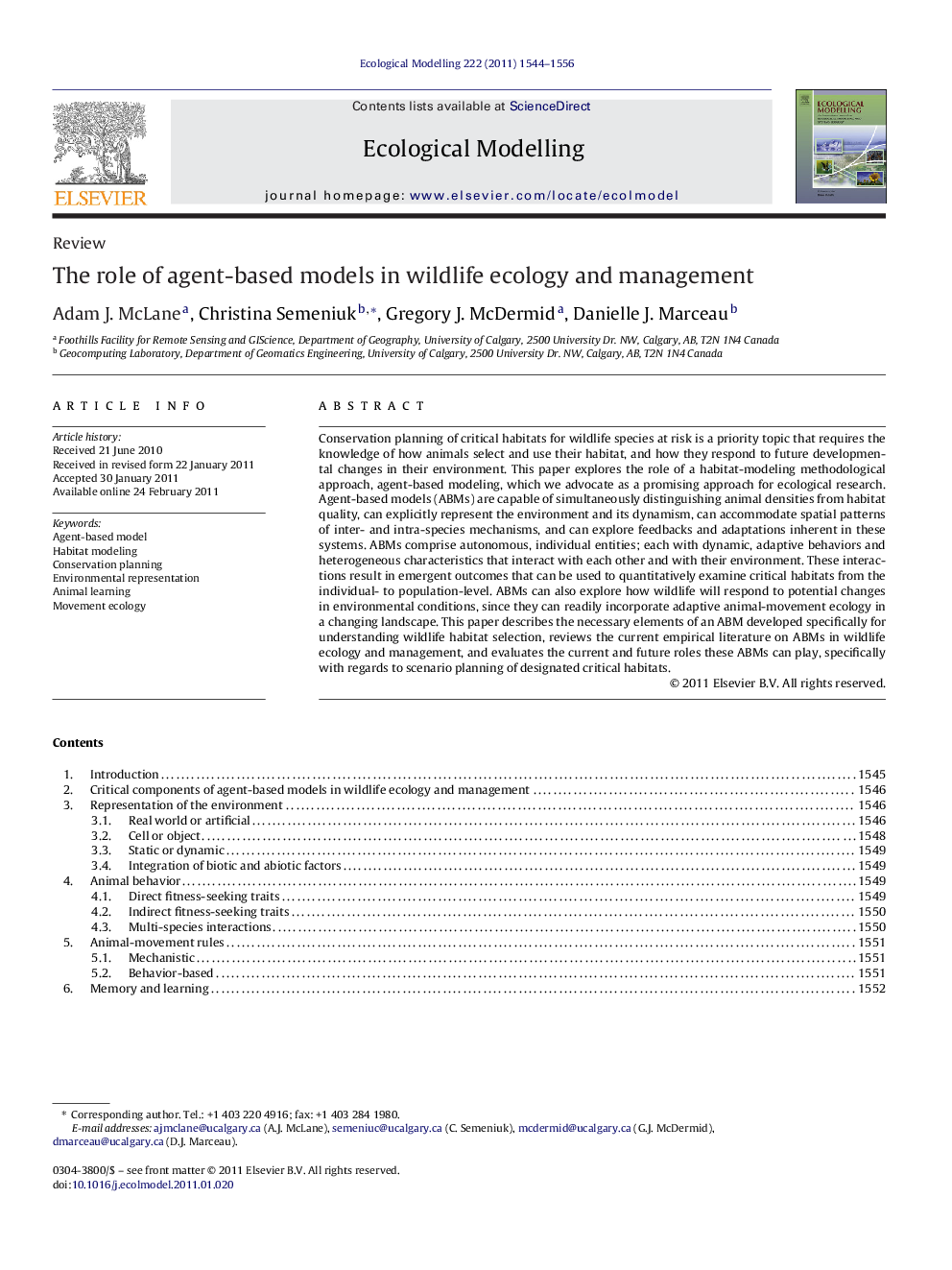| کد مقاله | کد نشریه | سال انتشار | مقاله انگلیسی | نسخه تمام متن |
|---|---|---|---|---|
| 4376983 | 1303403 | 2011 | 13 صفحه PDF | دانلود رایگان |

Conservation planning of critical habitats for wildlife species at risk is a priority topic that requires the knowledge of how animals select and use their habitat, and how they respond to future developmental changes in their environment. This paper explores the role of a habitat-modeling methodological approach, agent-based modeling, which we advocate as a promising approach for ecological research. Agent-based models (ABMs) are capable of simultaneously distinguishing animal densities from habitat quality, can explicitly represent the environment and its dynamism, can accommodate spatial patterns of inter- and intra-species mechanisms, and can explore feedbacks and adaptations inherent in these systems. ABMs comprise autonomous, individual entities; each with dynamic, adaptive behaviors and heterogeneous characteristics that interact with each other and with their environment. These interactions result in emergent outcomes that can be used to quantitatively examine critical habitats from the individual- to population-level. ABMs can also explore how wildlife will respond to potential changes in environmental conditions, since they can readily incorporate adaptive animal-movement ecology in a changing landscape. This paper describes the necessary elements of an ABM developed specifically for understanding wildlife habitat selection, reviews the current empirical literature on ABMs in wildlife ecology and management, and evaluates the current and future roles these ABMs can play, specifically with regards to scenario planning of designated critical habitats.
Research highlights
► Conservation planning of critical habitats is achievable via agent-based models—ABMs.
► In ABMs, autonomous individuals interact together and with landscapes; population-level traits emerge.
► Wildlife-management ABMs disentangle habitat use and quality, and represent dynamic environments.
► Using adaptive movement ecology in changing landscapes permits scenario planning of future habitats.
► ABMs are excellent tools encompassing multiple disciplines and stakeholder interests.
Journal: Ecological Modelling - Volume 222, Issue 8, 24 April 2011, Pages 1544–1556